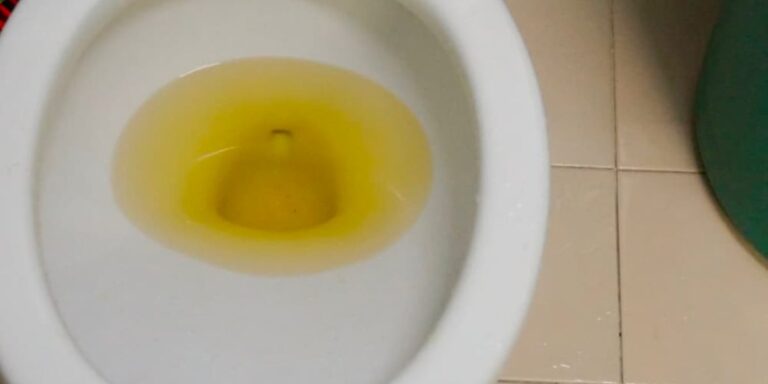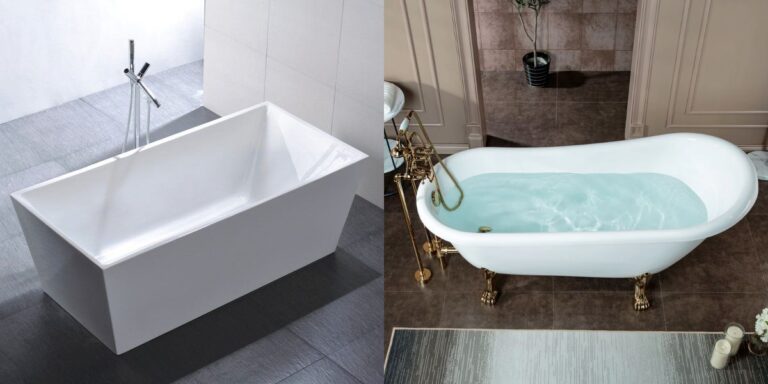How Many Gallons Is A Standard Bathtub?
Imagine you have had a long day and it is finally over. After a long day of working hard and managing multiple commitments, all you want to do is relax in a hot bath. The question is, how much liquid can your tub hold?
How many gallons does a typical bathtub hold is not as irrelevant a question as you may think. The consequences of this knowledge include environmental friendliness, home improvement planning, and more. It is not just about the numbers; rather, it is about getting a handle on how much water you use, how efficient your home is, and, ultimately, how your home is laid out.
How Many Gallons is a Standard Bathtub?
A standard bathtub in the United States usually holds around 80 gallons (302 liters) of water. This volume, however, can vary based on the specific design, shape, and size of the tub. Below is a table providing further clarification on different types of bathtubs and their water-holding capacities.
| Bathtub Type | Gallon Capacity |
|---|---|
| Standard Bathtub | 80 gallons |
| Soaking Bathtub | 60-80 gallons |
| Whirlpool Bathtub | 60-120 gallons |
| Freestanding Bathtub | 40-60 gallons |
| Clawfoot Bathtub | 40-60 gallons |
| Walk-in Bathtub | 40-80 gallons |
Why Bathtub Gallon Capacity Matters?
Conserving Water:
Water is a scarce commodity, and every drop counts. While many appreciate a nice long soak in the tub, we should be conscious of how much water we actually use. The typical capacity of a bathtub is between 40 and 60 gallons, while larger tubs can accommodate much more water.
You can make a more educated decision about how often you take a bath if you know how much water your tub can hold. Is it necessary to completely fill the tub every time, or will a partial fill suffice? You can do your part in the worldwide fight to save water by becoming a responsible consumer by simply learning how many gallons your bathtub holds.
Planning for Remodeling:
Renovating a bathroom may be a fun and rewarding endeavor, but it also involves a lot of choices. Getting the right tub is one of them. The gallon capacity of a bathtub is an important consideration alongside other criteria like as its size, construction, and style. The sizes of bathtubs can vary greatly, from tiny 40-gallon models to luxurious 100-gallon soaking tubs.
A household’s water and energy consumption should be taken into account when choosing a tub for a bathroom remodel. You can strike a balance between opulence, functionality, and ecological footprint by pondering your tub’s gallon capacity.
Ensuring Comfort:
The quality of your time in the tub is greatly enhanced by your ability to relax. Knowing how many gallons your tub holds can transform an ordinary soak into a luxurious experience. If your bathtub is too small, you might have to squeeze in or risk not being able to fully submerge.
If it is overly big, you may have trouble filling it without excess water being wasted. Knowing how many gallons your tub holds will allow you to fill it to the ideal level for a luxurious soak.
Managing Energy Costs:
Your water heater is hard at work as you soak in a warm bath, and that comes at a price. Utilities costs will increase proportionally with the amount of water you need to heat. It may get expensive fast if you have a huge bathtub and like to fill it up to the brim with water.
Knowing how many gallons your tub holds will help you budget wisely. You may use half as much water or switch to a smaller, more energy-efficient tub. Knowing how many gallons your bathtub holds is useful information for cost-cutting purposes.
How to Measure Bathtub Capacity?
If you’re unsure about your bathtub’s gallon capacity, you can determine it with a bit of hands-on work.
The Bathtub Prep: Ensuring the Tub is Bone Dry
Before you even start the process of measuring your bathtub’s capacity, it’s vital to make sure it’s fully drained. Why is this important? Well, you’re looking to calculate the full volume of water your tub can contain, not what’s left over after last night’s bubble bath.
So, get down to business and empty out every last droplet. This might involve getting your hands a little dirty and using a towel to sop up the remains. Remember, we want a bone dry tub to get the most accurate measurement possible.
The Five-Gallon Bucket Brigade: A Low-Tech but High-Impact Tool
Once your bathtub is fully drained and dry, it’s time to put your back into it. Enter the five-gallon bucket: a simple, no-nonsense way to measure your tub’s capacity. Fill that bucket to the brim and start pouring it into the tub, keeping a tally of how many times you’ve had to refill.
As a side note, the five-gallon bucket approach also gives you a sneak peek into your fitness level. It’s not as easy as it sounds! So consider it a bonus workout. The process might be a little on the monotonous side, but the precise results you’ll receive will be well worth the effort.
The Overflow Drain: Your Finish Line
As you pour your buckets, keep an eagle eye on the tub’s overflow drain. This unassuming little fixture serves a double duty during this operation. Not only is it preventing your bathroom from transforming into a mini indoor pool, but it’s also your finish line.
Once your poured water hits that overflow drain level, stop. This is your bathtub’s functional capacity. It might not be the absolute maximum volume of the tub, but it’s the most water it’ll hold before you risk a flood.
Do the Math: Calculation Time
You’ve braved the bucket brigade, and your bathtub is brimming with water right up to the overflow drain. Now it’s time for some simple arithmetic. Multiply the number of five-gallon buckets you poured into the tub by five. This is to convert your bucket count into the equivalent gallon amount.
The result? The approximate gallon capacity of your bathtub. While this may not be a perfect calculation, it’s a solid estimate of how much water your tub can hold before it starts to spill over.
For the Sticklers: Seek Professional Assistance
For most of us, an approximation is more than enough. But for those who require the utmost precision, you might want to consult with a professional or reach out to your tub’s manufacturer.
They can give you an exact capacity, usually based on the model of the tub. Be prepared though, as this might involve a bit more legwork than our five-gallon bucket method. However, the precise results could be worth it, especially if you’re calculating for something like a home spa setup or a water efficiency project.
Keep in mind that the volume of a bathtub filled to the overflow drain is typically less than its full capacity. For a precise measure, consider consulting a professional or the manufacturer.
Frequently Asked Questions
Is the bathtub’s capacity the same as the amount of water it can hold?
The capacity often refers to the maximum volume up to the overflow drain. However, it’s typically less than the total volume the bathtub could theoretically hold.
Does bathtub shape influence its capacity?
Yes, the shape and dimensions of a bathtub significantly impact its capacity.
How many gallons of water does a half-filled bathtub hold?
Assuming a standard bathtub, a half-filled bathtub would hold around 20-30 gallons.
Do all types of bathtubs have the same gallon capacity?
No, different types of bathtubs have different capacities. For example, soaking and whirlpool bathtubs tend to hold more water than standard tubs.
How can I save water when using my bathtub?
Consider filling your bathtub only to the necessary level, or opt for a quick shower instead when possible.
Related articles:
- How Much Water Does Your 5 Minute Shower Use?
- How Much Water Does A 10 Minute Shower Use?
- How Much Is A Bath In The Bible?

Amanda has been designing and installing bathtubs for over 15 years. She first got interested in the bathtub industry while working as an interior designer right after college. During her years as a designer, Amanda was frustrated by the lack of high-quality, unique bathtub options for her clients. This passion led her to start her own bathtub website in 2009.







